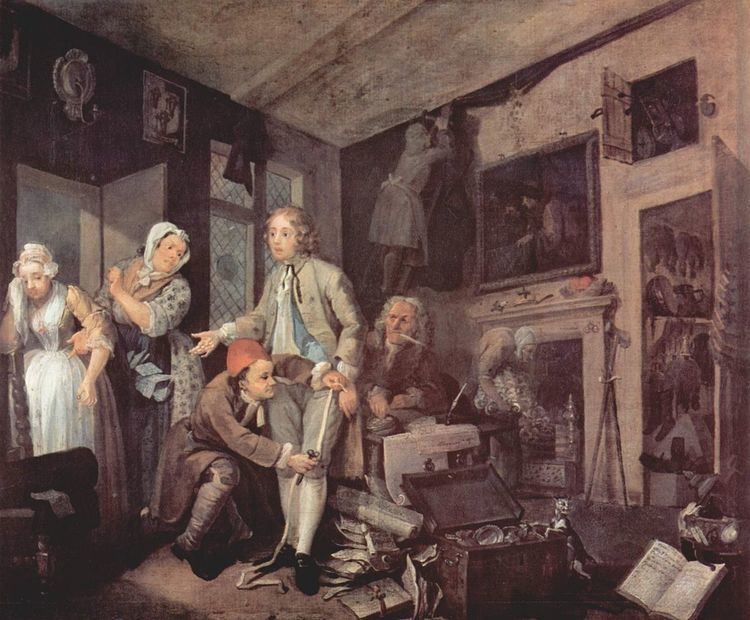 | ||
A Rake's Progress is a series of eight paintings by 18th-century English artist William Hogarth. The canvases were produced in 1732–33, then engraved and published in print form in 1734. The series shows the decline and fall of Tom Rakewell, the spendthrift son and heir of a rich merchant, who comes to London, wastes all his money on luxurious living, prostitution and gambling, and as a consequence is imprisoned in the Fleet Prison and ultimately Bethlem Hospital, or Bedlam. The original paintings are in the collection of Sir John Soane's Museum in London, where they are normally on display.
The filmmaker Alan Parker has described the works as an ancestor to the storyboard.
Adaptations
Gavin Gordon wrote a 1935 ballet titled The Rake's Progress, based directly on Hogarth's paintings. It was choreographed by Ninette de Valois, designed by Rex Whistler, has been recorded several times, and remains in the repertoires of various ballet companies.
The 1946 RKO film Bedlam, produced by Val Lewton and directed by Mark Robson, was inspired by A Rake's Progress. Hogarth received a writing credit for the film.
Igor Stravinsky's 1951 opera The Rake's Progress, with a libretto by W. H. Auden and Chester Kallman, is loosely based on the story from Hogarth's paintings. In 1961, David Hockney created his own print edition version of The Rake's Progress; he has also created stage designs for the Stravinsky Opera.
The University of New Hampshire's Department of Theatre and Dance created a collaborative stage show titled "The Rake's Progress" in 2003, which, with 17 actors and actresses, provided an intensive study of the etchings.
In 2012, English artist Grayson Perry created a series of tapestries named The Vanity of Small Differences, a modern adaptation of Hogarth's originals.
In 2014 Ulrike Theusner created a contemporary version in eight paintings - eleven plates of 130 × 200 cm (50 x 80 inches) accompanied as by Hogarth of a series of copper engravings reproducing the same themes.
